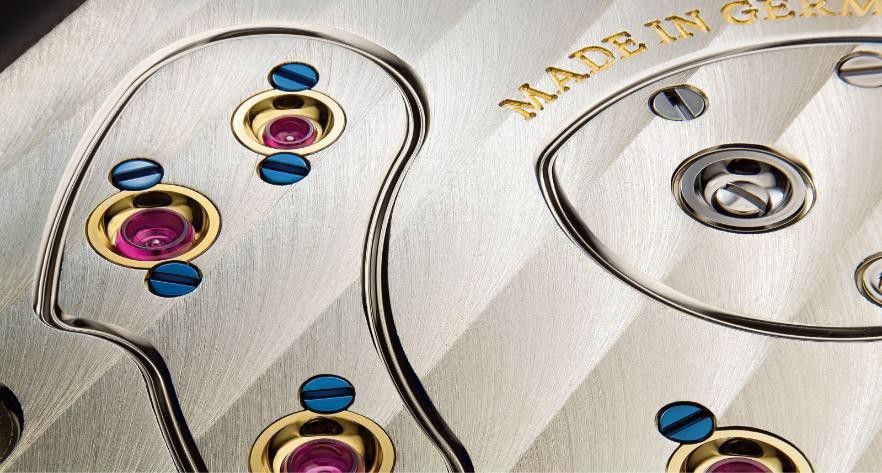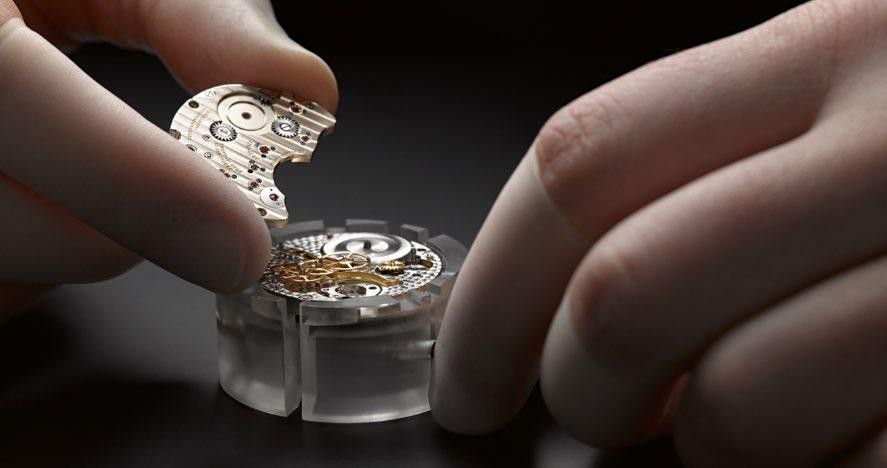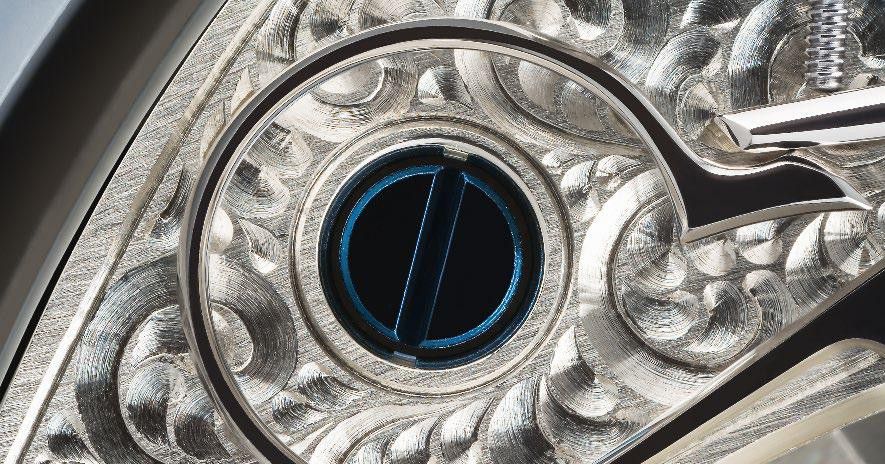In 1864, Ferdinand Adolph Lange added 3/4 plywood to the brand’s pocket watches for the first time. Since then, this initiative has become an iconic element of A. Lange & Söhne timepieces. Part of the 3/4 plywood is made of untreated German silver, an alloy introduced by the Saxon watchmaking industry in 1823. Since the redevelopment of the Lange watch factory in 1990, the plywood, bridges, and balance plywood of the brand’s watches have been made of German silver. This makes people wonder, what are the unique highlights of this material? Where does its name come from?

Classic 3/4 plywood details made from a fine, bright alloy, namely German Silver
The cases of Lange watches are made of different precious metals, and stainless steel case styles have been added since 2019. These watches share one thing: their internal frames are made of German silver. This frame consists of a series of flat and supporting components that are not directly involved in power transmission, including the bottom plate, 3/4 plywood, balance cock, and escape wheel cock.
As early as the 1850s, Ferdinand Adolf Lange used German silver in individual pocket watches for the first time. Before this time, the frames of these pocket watches were usually made of modified brass or hardened steel. At that time, this alloy, mainly composed of copper, zinc, and nickel, had just come out and could meet the characteristics required for Lange movements. Like brass, German silver is ideal for decorative use, although it is more challenging and exhibits better resistance to oxidation and corrosion. Therefore, German silver can be put into use without prior gold plating. Over time, only a very slight oxide layer will form on its surface. In addition, German silver also has excellent wear resistance, toughness, and rigidity. Fake watches for sale.
In addition to its advantages in properties, the watchmaking industry may have chosen German silver for another reason: selling timepieces into the American market. At the time, imports of precious metals, especially gold, were restricted by high tariffs, so merchants had to find other options for making watch cases and movements made of gold-plated brass. Early Lange pocket watches did not include a case when sold to the United States, which confirms the above speculation. In addition, the gold-plated brass plywood commonly used in the watchmaking industry is often mistaken for solid gold material because it is difficult for people to distinguish gold-plated metal from solid precious metal. The watch export business faces huge risks if things go on like this. At that time, the supply of silver was dwindling due to the depletion of silver mines in the eastern Erzgebirge Mountains. German silver served as a substitute to meet the needs of the manufacturing industry.
The true origins of German silver can be traced back to China. As early as the 17th century, metal products made of “Packfong” (a copper-zinc-nickel alloy) began to enter Europe from China. As the process of importing goods is cumbersome and costly, and Europe is in urgent need of strong and durable material to meet the growing demand for making tableware, pottery, and advanced micro-mechanical parts, it is urgent to “crack” the composition of zinc-nickel copper – this The technological breakthrough finally occurred in the 18th century.
In 1823, the Association for the Promotion of Industriousness of Trade launched a competition calling contestants to invent an alternative material that did not contain toxic compounds. Ernst August Geitner (1783-1852), a Saxon natural scientist and doctor who studied in Leipzig and received a doctorate, won this competition in one fell swoop. He opened a small factory producing textile dyes in the western Erzgebirge Mountains. Geithner developed a new alloy process that looked very similar to silver and became famous for its beautiful luster and competitive price. This alloy is often called “alpacca”, especially in the tableware industry. Based on its historical origins, this material is now known as “German silver” in English and “plata alemana” in Spanish (both meaning “German silver”).
The superior characteristics of German silver make it even more outstanding in today’s application scenarios: it is solid and is highly suitable for modification processes such as manual grinding, polishing, or engraving; it also has more significant stability and is the best choice for making timepiece movement frames. Ideal for complex movements with minimal operating space. The silvery-white appearance of German silver comes from the zinc and nickel elements in its composition. Adding nickel especially gives it a warm and delicate golden color while also being corrosion-resistant and long-lasting. Therefore, German silver does not need to undergo electroplating processes like gold plating to maintain its original performance and appearance. Over time, a unique oxide layer will form on its surface, making it more elegant and charming.

The secondary assembly process of the 1815 power reserve indicator watch. Since A. Lange & Söhne’s revival in 1990, German silver has been the solid foundation for A. Lange & Söhne’s in-house movements.
During the first assembly of the movement, even experienced watchmakers have to install and disassemble the 3/4 plywood several times in succession to calibrate the end wheel of each independent spindle. Watchmakers wear finger cots during operations to avoid leaving any imperfections in the material. Due to the complexity of the assembly process and the brand’s strict standards, all Lange watches are carefully assembled twice.
The harmonious combination of movement parts made of German silver and other materials creates a breathtaking technical spectacle. Stainless steel parts such as spindles, levers, or hairsprings, gold-plated gears, solid 18K gold sleeves, ruby bearings, and blue steel screws complement each other. Through the transparent sapphire crystal glass back, the rich material’s beautiful colors and elegant beauty can be seen at a glance.
Lange’s production director, Tino Bobe, said: “Since Lange’s revival, we have developed and produced more than 70 movements, and all replica watch factory-made movements use German silver. Our insistence on this material echoes Lange’s. The unique watchmaking concept also fully embodies our brand spirit: never choose shortcuts, but firmly choose the path of pursuing excellence. In order to satisfy the unremitting pursuit of movement quality, aesthetics, and functionality, we are committed to using superb skills to achieve excellence. of craftsmanship – both focused on German silver and much more than that.”

On the German silver balance cock, straight grain decoration, chamfer polishing, and hand-engraved craftsmanship are fully displayed.


